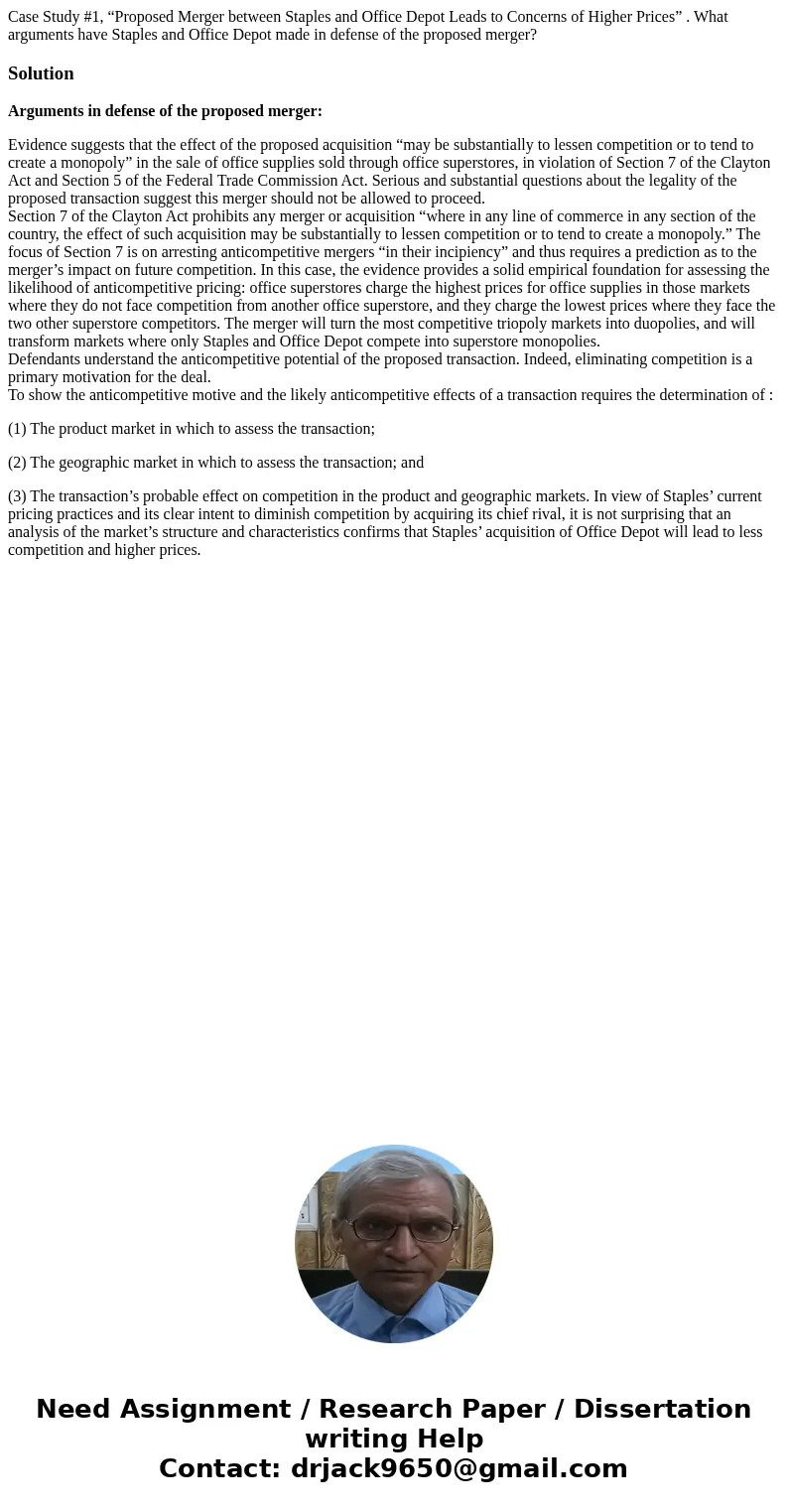Case Study 1 Proposed Merger between Staples and Office Depo
Case Study #1, “Proposed Merger between Staples and Office Depot Leads to Concerns of Higher Prices” . What arguments have Staples and Office Depot made in defense of the proposed merger?
Solution
Arguments in defense of the proposed merger:
Evidence suggests that the effect of the proposed acquisition “may be substantially to lessen competition or to tend to create a monopoly” in the sale of office supplies sold through office superstores, in violation of Section 7 of the Clayton Act and Section 5 of the Federal Trade Commission Act. Serious and substantial questions about the legality of the proposed transaction suggest this merger should not be allowed to proceed.
Section 7 of the Clayton Act prohibits any merger or acquisition “where in any line of commerce in any section of the country, the effect of such acquisition may be substantially to lessen competition or to tend to create a monopoly.” The focus of Section 7 is on arresting anticompetitive mergers “in their incipiency” and thus requires a prediction as to the merger’s impact on future competition. In this case, the evidence provides a solid empirical foundation for assessing the likelihood of anticompetitive pricing: office superstores charge the highest prices for office supplies in those markets where they do not face competition from another office superstore, and they charge the lowest prices where they face the two other superstore competitors. The merger will turn the most competitive triopoly markets into duopolies, and will transform markets where only Staples and Office Depot compete into superstore monopolies.
Defendants understand the anticompetitive potential of the proposed transaction. Indeed, eliminating competition is a primary motivation for the deal.
To show the anticompetitive motive and the likely anticompetitive effects of a transaction requires the determination of :
(1) The product market in which to assess the transaction;
(2) The geographic market in which to assess the transaction; and
(3) The transaction’s probable effect on competition in the product and geographic markets. In view of Staples’ current pricing practices and its clear intent to diminish competition by acquiring its chief rival, it is not surprising that an analysis of the market’s structure and characteristics confirms that Staples’ acquisition of Office Depot will lead to less competition and higher prices.

 Homework Sourse
Homework Sourse